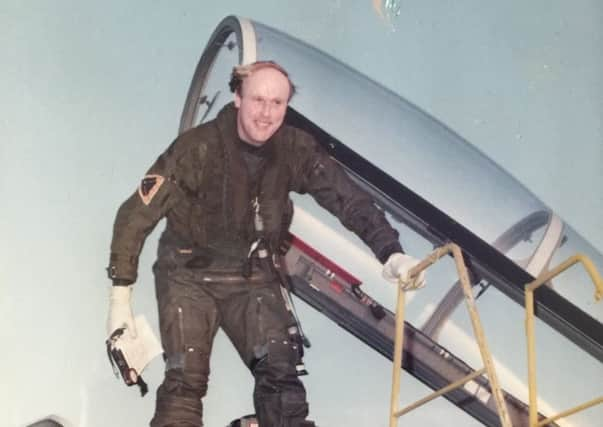Obituary: John Cockburn OBE, test and display pilot of fast military jets


John Cockburn, who has died at the age of 79, was a notable figure in British and European military aviation from the late 1960s until his retirement from BAE Systems in 2007.
Born into a farming family in Berwickshire, and educated at Loretto, he began his flying career as a National Service trainee pilot in the RAF. He gained his wings in 1957, via the Provost and Vampire and thence to the Meteor and Canberra bomber, on which he joined 139 Squadron at Binbrook, Lincolnshire, in 1959. He took part in Battle of Britain flypasts in 1959 and 1960 flying a Canberra, and achieved an “above average” rating as a jet bomber pilot.
Advertisement
Hide AdAdvertisement
Hide AdHe left the RAF in 1961, but he immediately joined Ferranti at Turnhouse (now Edinburgh Airport) as a test pilot to fly their Meteor in development trials on early terrain-following radar and radar destined for the new Lightning fighter.
Ferranti also operated a Lightning fighter, at British Aircraft Corporation (now BAE Systems) based at Warton, Lancashire. Following conversion to fly the Lightning with the RAF, Cockburn moved there in the mid-1960s, joining the team led by Wing Cdr Roland Beamont, where he was active in radar development, and one of the few to participate in the hazardous Lightning spinning programme.
In 1968 he had to eject from a burning Lightning shortly after take-off from Warton. Although Cockburn headed the aircraft for Morecambe Bay, the fire rapidly disabled the controls, leaving him powerless. After he had ejected, the fighter crashed into Pilling Moss, luckily missing nearby houses. Having parachuted into a chicken run, to an unprintable welcome from the proprietor, he made his way to a nearby toll bridge – helmet under his arm – where the staff took him for an accident-prone motorcyclist.
A few days later, he was displaying another Lightning at Farnborough Airshow.
In 1976, he and fellow pilot Tim Ferguson had a narrow escape when a gun-bay door flew off a Tornado dual control prototype in flight, smashing the canopy, injuring both pilots and damaging one of the engines. Although they could neither hear nor talk to one another, they made it back to Warton. The aircraft was modified as a result.
Throughout the late 1960s and into the 1970s, Cockburn was involved in the Jaguar and Tornado development programmes, as well as flying the Buccaneer and several other aircraft types. By the end of this period, which saw major advances in radar, navigation, weapon aiming, terrain following, and in-flight refuelling technology, he was probably the foremost avionics test pilot in Europe.
John Cockburn ceased test flying in late 1979 and went back to his farm. But he could not keep away from aviation and returned to Warton in the late 1980s, via a spell at Ferranti, as a Sales/Customer Director in BAE Far and Middle East and Canadian operations. With his first hand experience of most aspects of BAE aircraft and associated technologies, he was well placed to lead negotiations for the sale of military aircraft and other products to overseas air forces. A major part of this role was his involvement in winning the contract to supply the Royal Canadian Air Force with Hawk aircraft as advanced NATO trainers and aerobatic display machines.
Having been awarded the Queen’s Commendation for Valuable Service in the Air in 1974, and the OBE in 2002, he finally retired from BAE in 2007, 50 years after gaining his wings. His wife, Judy, had by then been running the farm for some years and as he said, “All I do is carry pails”.
Advertisement
Hide AdAdvertisement
Hide AdA humorous, sociable family man, John Cockburn also had wide sporting interests. Being a nephew of the legendary Borders racehorse trainer Stewart Wight, he rode racehorses in his youth as an amateur jockey. He played cricket for various teams on both sides of the Scottish Border, and first class rugby for Edinburgh Wanderers and Fylde in Lancashire.
Throughout his life he played golf with great enthusiasm and was a Member both at Royal Lytham &St Annes, and Muirfield. He died shortly after watching his horse, Always Tipsy, jointly owned with the Wight family, win a race at The Berwickshire Point-to-Point at Kelso. Appropriately the Challenge Cup presented to him bore his own name, as a winning jockey of the same race in 1960 and 1964.
He is survived by his wife, Judy – still farming – and their three children.
CONTRIBUTED